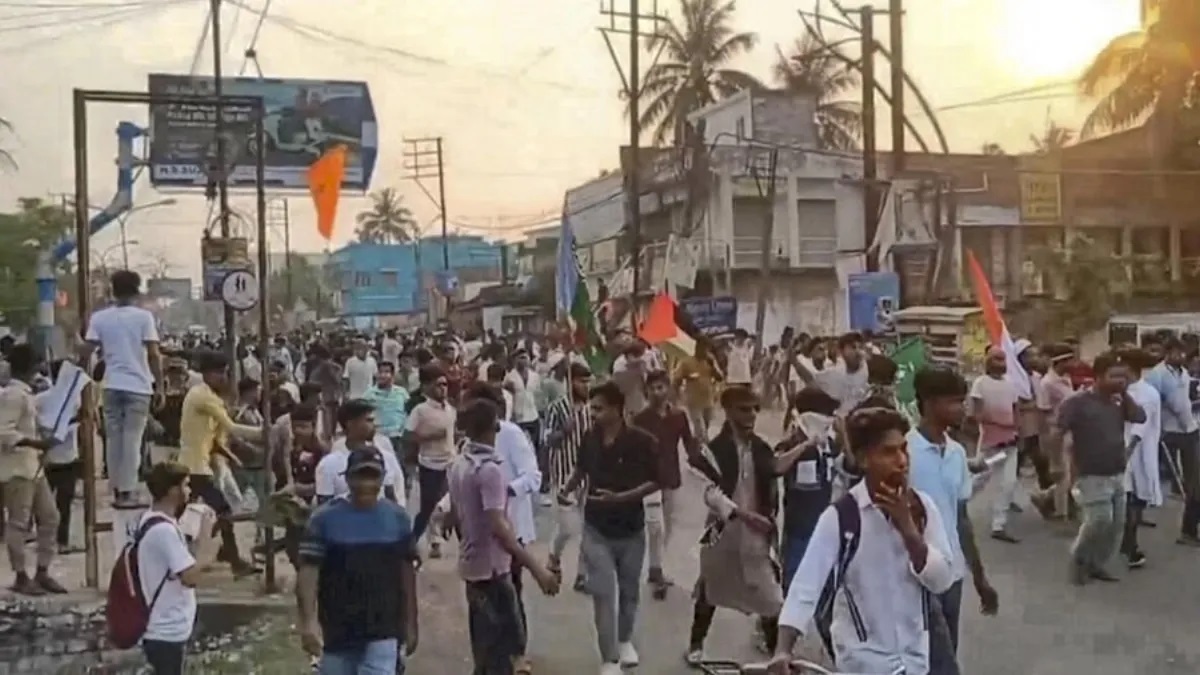Murshidabad, the historic capital of Bengal under Nawab rule, has long been celebrated for its syncretic culture where Hindu and Muslim communities have coexisted peacefully for centuries. However, like many regions across India, it has occasionally witnessed communal tensions that threaten this delicate social fabric. This article examines the reality of Hindu-Muslim relations in Murshidabad while highlighting the enduring spirit of communal harmony that defines the district.
Historical Context: A Legacy of Coexistence
Murshidabad’s identity is deeply rooted in:
- The shared heritage of Hazarduari Palace and Katra Masjid
- Joint celebration of festivals like Durga Puja and Eid
- The famous tradition of Muslim artisans crafting Hindu idols
- Sufi shrines visited by devotees of all faiths
Contemporary Challenges
Despite this strong foundation, certain incidents have caused tensions:
- Political Provocations: Occasional inflammatory rhetoric during elections
- Economic Factors: Competition over limited resources and employment
- Misinformation: Rumors spread via social media amplifying minor disputes
- External Influences: Outside elements attempting to disturb local peace
Notable Incidents and Responses
While isolated clashes have occurred, what’s more remarkable is how the community has responded:
- 2017 Dispute: A minor altercation during a religious procession was quickly resolved by local leaders from both communities
- 2022 Tension: False rumors about a religious site led to temporary unrest, but was defused through peace committees
- Grassroots Mediation: Immediate intervention by village elders preventing escalation of conflicts
The Forces of Harmony
Murshidabad’s social resilience comes from:
- Shared Economic Interests:
- Silk industry workers of all faiths
- Agricultural interdependence
- Cultural Bonds:
- Muslim musicians performing at Hindu weddings
- Shared culinary traditions
- Institutional Mechanisms:
- Active peace committees in every block
- Regular interfaith dialogues
- Swift police response to potential flashpoints
Voices from the Ground
Local perspectives reveal the true picture:
- Abdul Malik, a weaver: “Our Hindu brothers and we have worked together for generations in the silk trade”
- Priya Das, school teacher: “Our children play together – they don’t see these artificial divisions”
- Imam Sharifuddin: “We immediately contact our Hindu counterparts when any issue arises”
The Way Forward
Sustaining harmony requires:
- Strengthening local conflict resolution systems
- Promoting joint cultural programs
- Economic development to reduce resource competition
- Responsible reporting by media
- Youth engagement programs
Background of the Unrest
The Waqf (Amendment) Act, 2025, introduced changes to the management of Waqf properties, which are endowments made by Muslims for religious or charitable purposes. Critics argued that the amendments infringed upon religious freedoms and minority rights, leading to widespread concerns, particularly among Muslim communities. Despite assurances from West Bengal Chief Minister Mamata Banerjee that the Act would not be implemented in the state, protests intensified, especially in Murshidabad district.
Escalation of Violence
On April 8, 2025, protesters blocked National Highway 12 at Umarpur in Jangipur and set police vehicles on fire. Further violence erupted on April 11, with demonstrators setting a police jeep ablaze, vandalizing vehicles, and attacking the office of local Trinamool Congress MP Khalilur Rahaman. Protesters also disrupted train services by squatting on railway tracks and pelting stones at a stationary train at Nimtita railway station. The unrest led to three fatalities and injuries to several police personnel.
Government Response and Political Reactions
In response to the escalating situation, the Calcutta High Court mandated the deployment of Border Security Force (BSF) personnel to assist with law enforcement efforts. Authorities arrested over 150 individuals and suspended internet services in affected areas to prevent the spread of misinformation.
Chief Minister Mamata Banerjee appealed for peace, reiterating that the Waqf Amendment Act would not be enforced in West Bengal. She urged communities to maintain harmony and warned against political parties attempting to incite riots for political gain.
Opposition leaders criticized the state government’s handling of the situation. BJP leaders accused the administration of inaction and alleged that the violence was a premeditated act by extremist elements aiming to instill fear and disorder.
Displacement and Humanitarian Concerns
The violence prompted hundreds of residents, primarily Hindus from areas like Dhulian, to flee across the Bhagirathi River to neighboring Malda district. Displaced families were sheltered in schools, with the local administration providing food and assistance.
Murshidabad’s Message to India
The events in Murshidabad highlight the delicate balance between legislative actions and communal harmony. While the Waqf (Amendment) Act aimed to reform property management, its reception underscores the importance of inclusive dialogue and sensitivity to minority concerns. Ensuring peace and unity requires collaborative efforts from government authorities, community leaders, and civil society. While no society is completely free from tensions, Murshidabad’s enduring communal harmony offers important lessons. The district demonstrates that India’s pluralistic traditions can withstand modern challenges when communities choose dialogue over division. As the birthplace of many syncretic traditions, Murshidabad continues to show the path toward peaceful coexistence.
Note to Readers: This article aims to present a balanced perspective. For the latest updates, please refer to official sources and local reputable news outlets.


 Watch
Watch
 CASUAL WEAR
CASUAL WEAR
[…] April 2025, Murshidabad, a district in West Bengal, became the epicenter of communal tensions following mass protests […]
[…] early 2025, the Indian Parliament passed the Waqf (Amendment) Act, 2025, a legislative update that has quickly become one of the most polarizing topics in the country. The […]